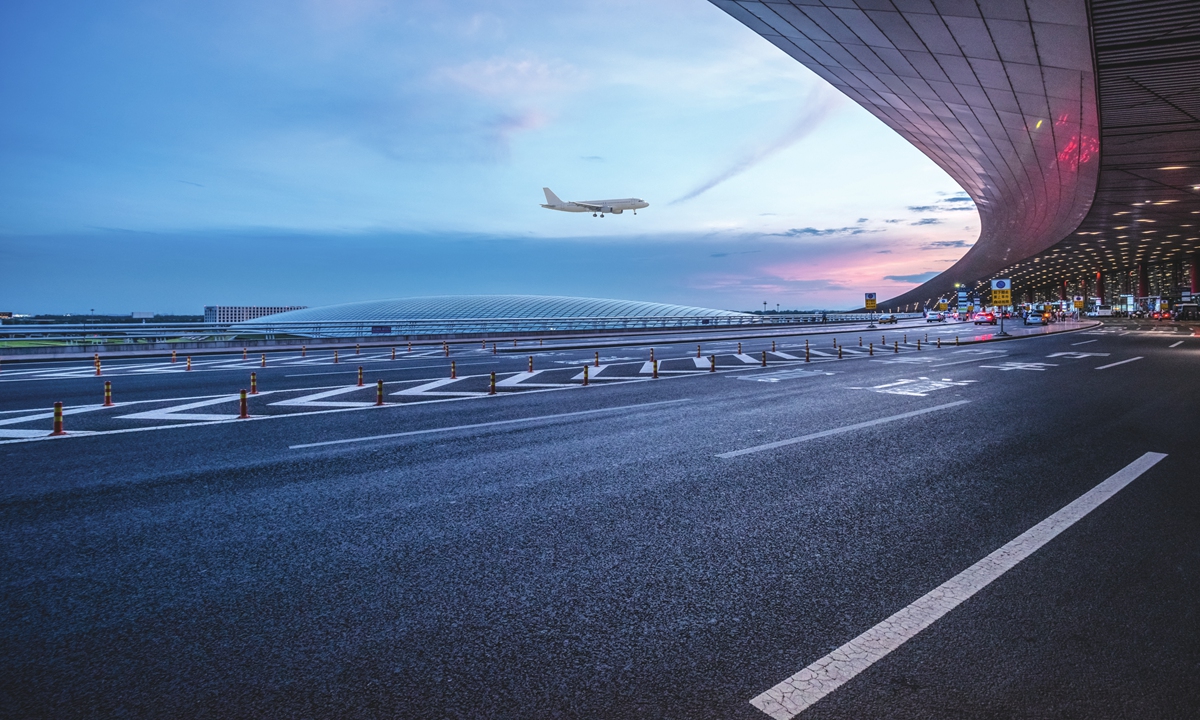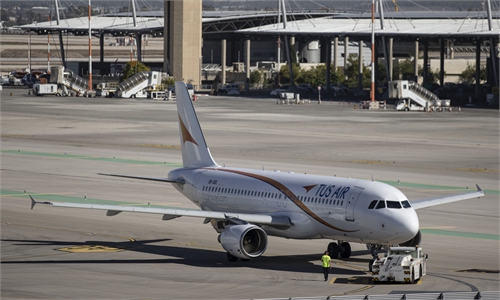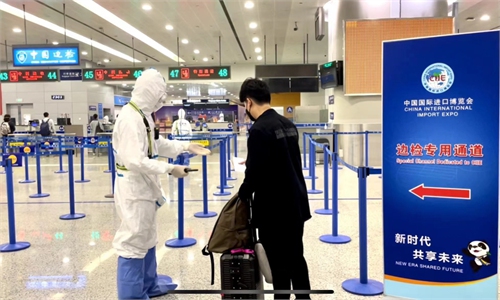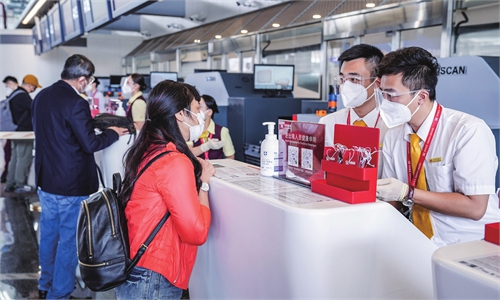
An airplane takes off from the Beijing Capital International Airport. File Photo: VCG
Domestic passenger flights are increasing in China as more cities gradually remove anti-COVID curbs for public transportation, and some cities have witnessed a rise of more than 200 percent in flights over the weekend.
The average daily number of domestic passenger flights returned to more than 3,000 from Saturday to Monday, according to data from information provider VariFlight sent to the Global Times on Monday, adding that Monday's flights could hit more than 3,860.
Although the number is only one-third of the level in 2019, VariFlight predicted that flights will climb further in the coming days.
Domestic passenger flights at Harbin Taiping International Airport in Northeast China's Heilongjiang Province totaled 219 on Sunday, an increase of 228 percent from the end of November.
The number of passenger flights at Guangzhou Baiyun International Airport in South China's Guangdong Province on Sunday was 186, an increase of 143 percent compared with the end of November.
Urumqi city saw an increase of 93 percent at its Diwopu International Airport. The number of flights at Chongqing Jiangbei International Airport on Monday was about 120, an increase of 48 from the previous day, and the peak passenger volume in the past three weeks.
The rise of domestic flying was brought about by loosening travel restrictions, as more cities have gradually scrapped the requirement for mandatory COVID-19 test results for taking public transportation, said Zheng Hongfeng, VariFlight CEO.
At least a dozen cities across China further adjusted and optimized epidemic control measures over the weekend. In Shanghai, negative nucleic acid test results were no longer required when taking public transportation within the city.
On Sunday, local officials in Urumqi, capital of Northwest China's Xinjiang Uygur Autonomous Region, announced that the city will step up efforts to boost the resumption of work, production and business activities.
The measures came after China made its latest move in scientific and precise epidemic control and prevention work to fight the pandemic amid a global resurgence by releasing 20 optimized measures on November 11, including shortened quarantine periods for international arrivals and cancelation of circuit breakers for inbound flights.
Further recovery will still depend on continuous operations among cities, and it is expected that domestic passenger flights will take more than three months to fully recover to the level of 2019, Zheng said.
With the optimization of epidemic measures, airfares have risen. Data from online travel platform Tongcheng Travel sent to the Global Times on Monday showed that the average airfare in the past week increased by 30 percent week-on-week to 750 yuan ($108), about 16 percent higher than the average price of this year's National Day holidays.
International flights are also making a fast recovery. China Southern Airlines restarted services between Guangzhou and Kathmandu on November 29.
Hainan Airlines said that it plans to resume a direct flight between Shanghai and Tel Aviv in December, followed a restarted service between Shenzhen and Tel Aviv on November 29. Currently, Hainan Airlines has recovered 12 overseas routes.



